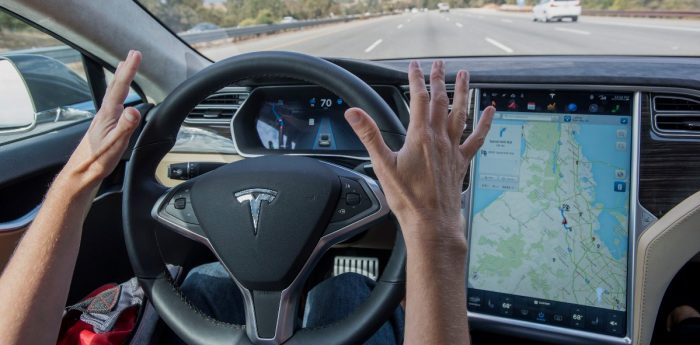This morning, the National Highway Traffic Safety Administration (NHTSA) released documents that show Tesla’s Autopilot features have caused nearly a dozen accidents with parked emergency vehicles since 2018. The 11 Tesla Autopilot crash incidents have resulted in 17 injuries and one fatality. Either Tesla Autopilot or Traffic Aware Cruise Control technologies have been involved in each crash.
The investigation’s main focus appears to be driver attentiveness technology. Though it’s not clear how many of the first responder accidents were caused by driver negligence, it’s been an ongoing problem for the California automaker. Most of the accidents happened at night, and the report notes that first responders were signaling their presence with emergency lights and/or other visual cues.
“Most incidents took place after dark and the crash scenes encountered included scene control measures such as first responder vehicle lights, flares, an illuminated arrow board, and road cones,” NHTSA wrote. “The involved subject vehicles were all confirmed to have been engaged in either Autopilot or Traffic Aware Cruise Control during the approach to the crashes.”
The agency’s investigation will cover about 765,000 Tesla vehicles, sold from 2014 to the present day. Every model in Tesla’s lineup — Models S, X, 3, and Y — are affected.
Background: Tesla Autopilot Self-Driving Limitations
Since 2016, the National Transportation Safety Board has recommended that NHTSA and Tesla limit the use of the vehicle’s self-driving capabilities to areas where it can safely operate, based on its own accident investigations. The NTSB also recommended that NHTSA require Tesla to improve its driver attentiveness systems — it’s notoriously easy to bypass the steering wheel pressure method it currently uses.
It’s also been suggested that the “Autopilot” terminology itself is misleading as Tesla’s driver assistance system has never been intended to be fully autonomous.
Until now, NHTSA had not mobilized on any of the NTSB’s recommendations. But eventually, the number of Tesla Autopilot crashes became overwhelming. NHTSA has sent investigative teams to 31 crashes involving partially automated driver assist systems since June of 2016. According to its data, of those crashes, 25 involved Tesla Autopilot in which ten deaths were reported.
2021 Tesla Autopilot Crash Investigation Details
The new investigation covers accidents in nine states. The initial report indicates that NHTSA “will assess the technologies and methods used to monitor, assist, and enforce the driver’s engagement with the dynamic driving task during Autopilot operation.”
It will also focus on the technology’s lane centering, speed monitoring, and object detection and response systems.
In a statement made to the Associated Press, NHTSA asserted “that no commercially available motor vehicles today are capable of driving themselves. Every available vehicle requires a human driver to be in control at all times, and all state laws hold human drivers responsible for operation of their vehicles.”
As of this writing, Tesla had closed its media relations department and had not responded to the investigation.

